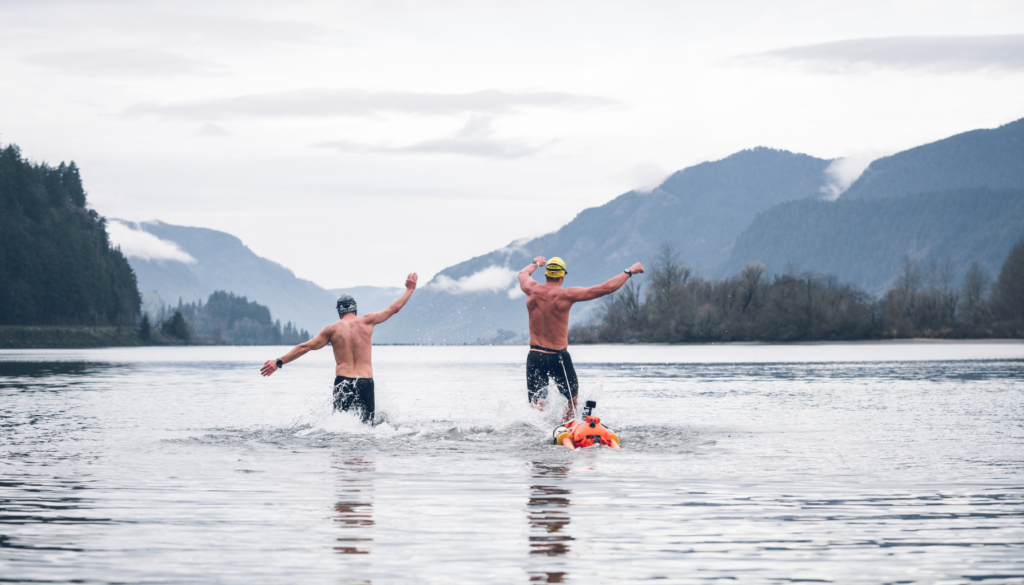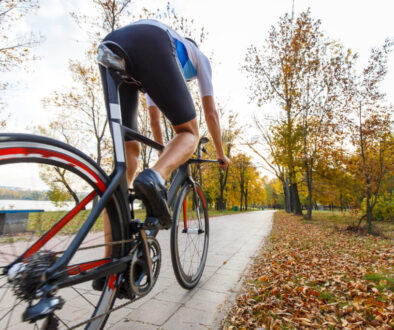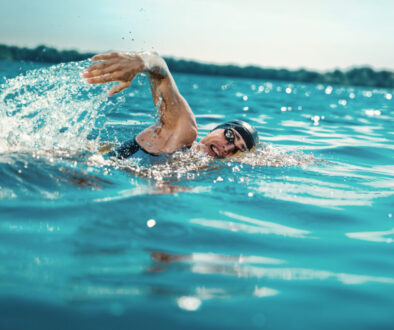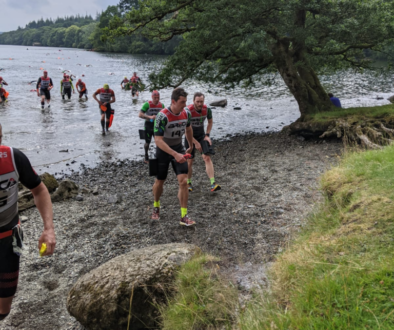Cold Water Swimming: A Primer
Cold water swimming in the open water can be quite a challenge. It requires a combination of preparing the mind and the body to do something it’s unaccustomed to. The adage of “mind over matter” comes into play when we are thinking about swimming in very cold conditions. Your first swim is not going to be so much about training as it is about getting acclimated to the water temperature. So here we go!
Be Prepared (Kit List)
Make sure you have the appropriate gear for swimming at this time of year. A swimming costume isn’t going to cut it, unless you’re already a hardcore polar bear swimmer! Some of the following kit would be advised:
- A close-fitting wetsuit. The tighter the better in order to keep the water layer close to your skin
- A rash guard as an extra layer or neoprene vest. That extra layer might just do the trick.
- Multiple swim hats (1-2 layers) and/or a neoprene swim hat
- Optional swim gloves and socks
- A few pairs of goggles for all conditions (clear and mirrored)
- Anti-chafe. With all these layers, you’re putting on, you might need to protect those extra folds or chafing points.
- Ear plugs to protect your head from a further ice cream headache.
- A few extra towels
- A dry robe or big roomy coat
Getting in There (for the first time)
Once you get in the water, it is a different story. The cold can make your body react adversely to the change in temperature and that is a natural reaction. So, you need to calm your breathing and relax. Sometimes, it takes two or three immersions in the water to get comfortable. Everyone reacts differently, so take your time. Here’s how you do it:
- Allow the water to reach up to your waist
- Take a few easy controlled breaths
- Splash water on your face 4-5 times to alleviate an ice cream headache
- Dip your head in face down and blow bubbles
- Dump the suit – add cold water in and if you have a chance, exit the water and squeeze out the excess water so that your suit sticks to you.
- Start swimming with breaststroke and eventually your stroke of choice
It’s very important to give your body and mind time to adapt to cold water swimming with short purposeful sessions. Once you become accustomed to it, you can gradually lengthen them into proper training or pleasure. As long as you have the energy in you, the movement will generate heat and fight the cold. If, mid-swim, you notice that you are getting cold and shivering again, get out.
Always take a buddy with you – whether you are swimming in cold water for the first time or the 100th time things can go wrong. We recommend taking someone with you or having a someone available to assist you if you get into trouble.
High and Dry! (Time to get out)
Once you exit the water, your body will continue to react to the cold water. You will need to take extra care to warm yourself up. You will experience 20-40 minutes of continued cooling (the ‘afterdrop’) after you’ve exited the water and your core body temperature can take 4-5 hours to return to its normal temperature. Here are a few tips:
- Dry off and remove your wet clothes as soon as possible
- Dress in dry, warm clothes, including bobble hat, gloves and thick socks – ideally lay these out in advance, so you can do this quickly
- Have a warm drink. What’s your favourite?
Things NOT to do:
- Have a hot shower (you need to warm your core body temperature up slowly)
- Press hot water bottles against your skin
- Use foil/space blankets
Congratulations! You’ve done it! You are now a cold-water swimmer!



